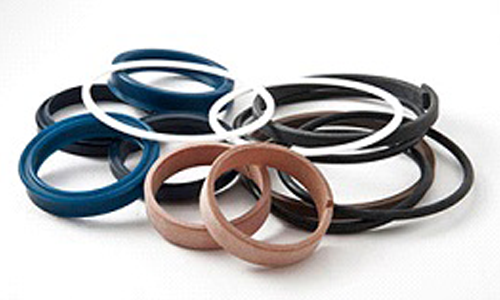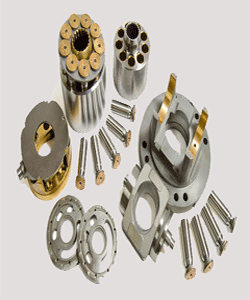Products
HYDRAULIC CYLINDER :
A hydraulic cylinder is a mechanical actuator that is used to give a unidirectional force through a unidirectional stroke. It has many applications, notably in construction equipment, manufacturing machinery, and civil engineering.

HYDRAULIC SEALS & SEAL KITS :
A hydraulic seal is a relatively soft, non-metallic ring, captured in a groove or fixed in a combination of rings, forming a seal assembly, to block or separate fluid in reciprocating motion applications. Hydraulic seals are vital in machinery.

MANIFOLD BLOCK :
A Manifold Block is a manifold that regulates fluid flow between pumps and actuators and other components in a hydraulic system. It is like a switchboard in an electrical circuit because it lets the operator control how much fluid flows between which components of a hydraulic machinery.

UNDERCARRIAGE PARTS :
Knowledge of the market of undercarriage parts for excavators and bulldozers. Guaranteed quality. Taylor made sales support. Market-driven development. Online support. Global player Advantage.

HYDRAULIC SYSTEM :
A hydraulic drive system is a quasi-hydrostatic drive or transmission system that uses pressurized hydraulic fluid to power hydraulic machinery. The term hydrostatic refers to the transfer of energy from pressure differences, not from the kinetic energy of the flow.

HYDRAULIC PUMP MOTOR & ITS SPARE PARTS :
A hydraulic motor is a mechanical actuator that converts hydraulic pressure and flow into torque and angular displacement (rotation). The hydraulic motor is the rotary counterpart of the hydraulic cylinder as a linear actuator.
A pump is a device that moves fluids, or sometimes slurries, by mechanical action. Pumps can be classified into three major groups according to the method they use to move the fluid: direct lift, displacement, and gravity pumps.


SPARE PARTS:
A spare part, spare, service part, repair part, or replacement part, is an interchangeable part that is kept in an inventory and used for the repair or replacement of failed units.
